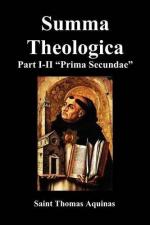Reply Obj. 1: The Old Law is distinct from the natural law, not as being altogether different from it, but as something added thereto. For just as grace presupposes nature, so must the Divine law presuppose the natural law.
Reply Obj. 2: It was fitting that the Divine law should come to man’s assistance not only in those things for which reason is insufficient, but also in those things in which human reason may happen to be impeded. Now human reason could not go astray in the abstract, as to the universal principles of the natural law; but through being habituated to sin, it became obscured in the point of things to be done in detail. But with regard to the other moral precepts, which are like conclusions drawn from the universal principles of the natural law, the reason of many men went astray, to the extend of judging to be lawful, things that are evil in themselves. Hence there was need for the authority of the Divine law to rescue man from both these defects. Thus among the articles of faith not only are those things set forth to which reason cannot reach, such as the Trinity of the Godhead; but also those to which right reason can attain, such as the Unity of the Godhead; in order to remove the manifold errors to which reason is liable.
Reply Obj. 3: As Augustine proves (De Spiritu et Litera xiv), even the letter of the law is said to be the occasion of death, as to the moral precepts; in so far as, to wit, it prescribes what is good, without furnishing the aid of grace for its fulfilment. ________________________
THIRD ARTICLE [I-II, Q. 99, Art. 3]
Whether the Old Law Comprises Ceremonial, Besides Moral, Precepts?
Objection 1: It would seem that the Old Law does not comprise ceremonial, besides moral, precepts. For every law that is given to man is for the purpose of directing human actions. Now human actions are called moral, as stated above (Q. 1, A. 3). Therefore it seems that the Old Law given to men should not comprise other than moral precepts.
Obj. 2: Further, those precepts that are styled ceremonial seem to refer to the Divine worship. But Divine worship is the act of a virtue, viz. religion, which, as Tully says (De Invent. ii) “offers worship and ceremony to the Godhead.” Since, then, the moral precepts are about acts of virtue, as stated above (A. 2), it seems that the ceremonial precepts should not be distinct from the moral.
Obj. 3: Further, the ceremonial precepts seem to be those which signify something figuratively. But, as Augustine observes (De Doctr. Christ. ii, 3, 4), “of all signs employed by men words hold the first place.” Therefore there is no need for the Law to contain ceremonial precepts about certain figurative actions.




